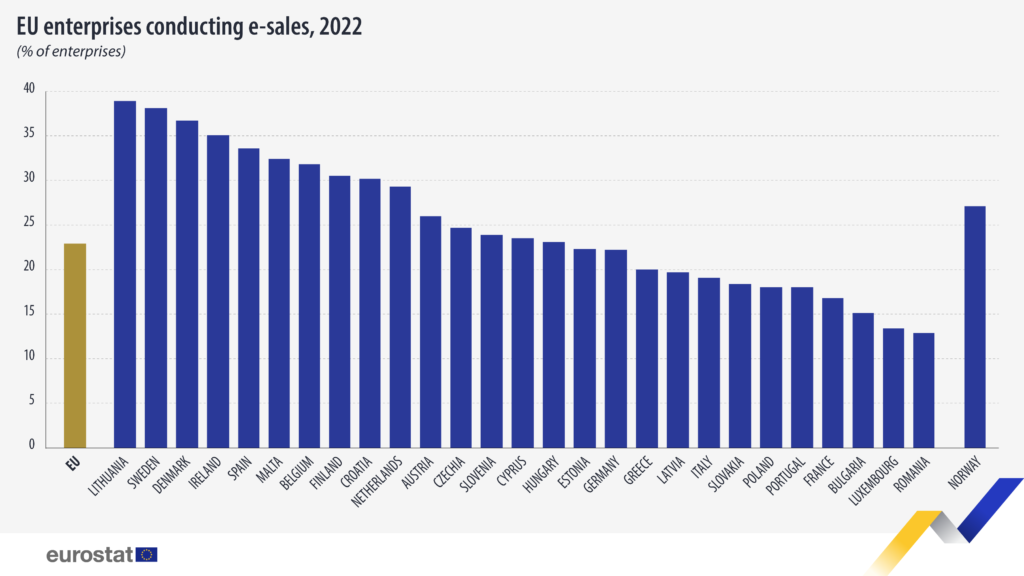In 2022, a notable 22.9% of enterprises within the European Union embraced online sales, marking a slight increase of 0.1 percentage points from 2021’s 22.8% and a significant rise of 6.5 percentage points from 2012’s 16.4%. This reflects a growing trend among EU businesses to integrate e-commerce into their operations.
This blog post sheds light on key insights derived from a more comprehensive analysis on e-commerce trends, as detailed in the Statistics Explained section on e-commerce statistics.
The adoption of online sales among EU countries showed substantial variation. Leading the chart, Lithuania showcased a remarkable 38.9% of enterprises engaging in online sales, closely followed by Sweden at 38.1% and Denmark at 36.7%. On the other end of the spectrum, Romania, Luxembourg, and Bulgaria recorded the lowest engagement rates, with 12.9%, 13.4%, and 15.1% respectively.
The data also highlighted a correlation between the size of an enterprise and its likelihood to sell online. In 2022, a significant 45.9% of large enterprises reported conducting sales online, compared to 30.2% of medium-sized enterprises. Small enterprises, however, had a lower engagement rate at 20.8%.
This trend underscores the increasing importance of e-commerce as a vital sales channel for businesses across the European Union, regardless of their size. It signals a shift towards digital transformation, where embracing online platforms for sales is becoming not just a competitive advantage but a necessity for growth and sustainability in the current market landscape.


